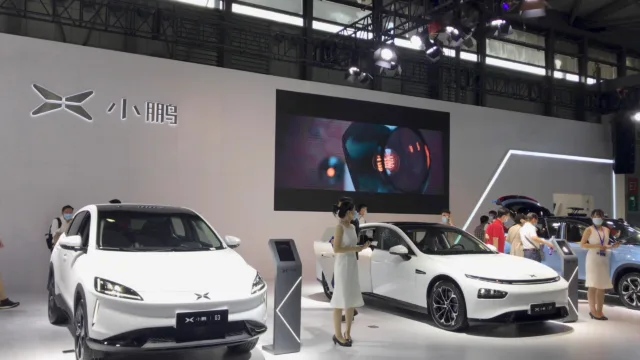TLDRs;
- Tesla remains Norway’s leading EV brand, led by strong Model Y sales
- Chinese EV makers now hold around 10% of Norway’s market share
- Norway’s tariff-free policies have created a welcoming environment for Chinese brands
- The country’s EV-first infrastructure has turned it into a strategic launchpad for global automakers
Tesla continues to dominate Norway’s electric vehicle (EV) landscape, but Chinese automakers are quickly gaining ground.
In just four years since their entry into the Nordic nation, Chinese EV brands such as BYD, XPeng, and MG have claimed a spot among Norway’s top 20 best-selling carmakers, signaling a fast-moving shift in the European automotive landscape.
Chinese Brands Fast-Track Market Share
Since 2020, Chinese manufacturers have made a targeted push into Norway, capitalizing on competitive pricing and advanced technology to win over consumers. Brands like BYD and XPeng have strategically prioritized Norway as a gateway to Europe, leveraging its favorable policy environment and EV-savvy population.
Unlike the European Union and the United States, Norway does not impose import tariffs on Chinese EVs, making it an ideal proving ground for emerging brands.
The result has been a notable market shakeup. According to the Norwegian Road Federation, Chinese automakers now make up roughly 10% of the EV market, a significant achievement in a relatively short span. This expansion places them alongside more established Western brands, including Volkswagen and Volvo, which have long held sway in the region.
Norway’s EV-Friendly Ecosystem Paves the Way
Norway has long been recognized as one of the most electrified nations in the world. The country’s robust policy ecosystem, initiated in the 1990s, includes VAT exemptions, reduced tolls, and privileges like access to bus lanes for EV owners. These measures have created an exceptionally attractive environment for both consumers and automakers. As of mid-2024, nearly 89% of all new passenger vehicle sales in Norway were fully electric.
Infrastructure has also played a vital role. With over 27,000 public charging stations and a dense distribution relative to population size, Norway has effectively eliminated range anxiety, a common hurdle in EV adoption elsewhere. This national commitment to clean transport has attracted global players eager to test their products in a mature, demanding market.
Tesla Still Sets the Pace
Despite the surge of new competition, Tesla remains firmly at the top. The Model Y, in particular, continues to drive strong sales, reinforcing Tesla’s lead in both innovation and brand recognition. However, challenges are mounting.
Tesla’s global deliveries are projected to decline in 2025, with softening demand in both Europe and China, as well as increased pressure from newer, more affordable competitors like BYD’s Seagull.
Tesla’s ability to maintain its market share in Norway may hinge on how well it adapts to these pressures. A refreshed Model Y has so far failed to ignite the kind of demand the company has enjoyed in the past. Without significant new models or pricing adjustments, Tesla could see its lead eroded in markets where pricing and functionality are now king.
A Glimpse into the Future of Global Auto Markets
Norway’s EV market offers a revealing glimpse into the future of the global automotive industry. The rapid rise of Chinese manufacturers, the enduring appeal of Tesla, and the shifting dynamics of policy and consumer preference underscore a fundamental transformation underway.
With traditional automakers scrambling to catch up and geopolitical tensions adding layers of complexity, Norway stands as a litmus test for what comes next in the global EV race.








